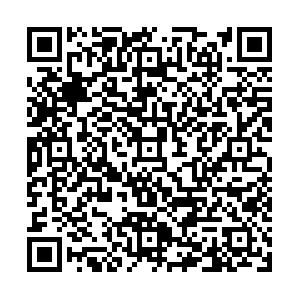Effect of goal-directed volume combined with dexmedetomidine on hemodynamics and brain protection in patients with craniocerebral injury
-
摘要:
目的 探讨围术期应用目标导向容量治疗联合右美托咪定对创伤性颅脑损伤患者血流动力学的影响及脑保护作用,为临床医师选择治疗方式提供依据。 方法 将南通大学附属海安医院2018年8月—2020年8月期间于重症监护室住院治疗的70例创伤性颅脑损伤患者纳入研究,按照随机数字表法分为观察组和对照组,每组35例。2组患者均采用目标导向容量治疗,观察组患者麻醉诱导采用右美托咪定持续静脉泵注,对照组则应用生理盐水,密切观察并记录2组患者麻醉诱导后(T0)、开硬脑膜时(T1)、关硬脑膜时(T2)、手术结束时(T3)的心率(HR)、平均动脉压(MAP)及血清S100β水平,术前、术后7 d的格拉斯哥昏迷评分(GCS)评分。 结果 2组患者T0时刻HR、MAP、血清S100β水平之间差异无统计学意义(均P>0.05);观察组T1、T2、T3时刻的HR、MAP、血清S100β水平均低于对照组(均P<0.05);2组患者术前GCS评分差异无统计学意义(P>0.05);术后7 d观察组患者GCS评分显著高于对照组[(13.21±1.04)分vs.(11.01±1.55)分,P<0.05]。 结论 围术期应用目标导向容量联合右美托咪定治疗创伤性颅脑损伤患者,能够维持患者脑血流动力学稳定,更好地保护脑功能。 Abstract:Objective To evaluate the effect of goal-directed fluid therapy combined with dexmedetomidine in the perioperative period on haemodynamics and brain protection in patients with traumatic craniocerebral injury, so as to provide a basis for clinicians to choose treatment methods. Methods A total of 70 patients with traumatic craniocerebral injury admitted in our hospital from August 2018 to August 2020 were enrolled by convenience sampling method. According to the random number table method, they were divided into the observation group and control group, with 35 patients in each group. Both groups were treated with goal-directed fluid therapy. Patients in the observation group were induced by continuous intravenous infusion of dexmedetomidine, while patients in the control group were treated with normal saline. Anaesthesia induction (T0), open the dura (T1), close the dura (T2), the end of surgery (T3) of heart rate (HR), mean arterial pressure (MAP) and the level of serum S100β, GCS score of preoperative and 7 days after operation were closely observed and recorded. Results No statistically significant difference was observed between both groups in terms of gender, age, BMI, ASA classification and other general information (all P>0.05). Moreover, no significant difference was found in the HR, MAP and serum S100β levels between both groups at T0 (all P>0.05). The HR, MAP and serum S100β levels in the observation group were lower than those in the control group at T1, T2 and T3 (all P < 0.05). No difference was observed in the preoperative GCS score between both groups (P>0.05). The GCS score of the observation group was significantly higher than that of the control group 7 days after the operation [(13.21±1.04)points vs. (11.01±1.55) points, P < 0.05]. Conclusion The application of goal-directed fluid therapy combined with dexmedetomidine in perioperative treatment of patients with traumatic craniocerebral injury can maintain the stability of cerebral haemodynamics, better protect brain function and has a broad clinical application prospect. -
Key words:
- Craniocerebral injury /
- Dexmedetomidine /
- Goal-directed fluid therapy /
- Haemodynamics
-
表 1 2组创伤性颅脑损伤患者不同时间点HR比较
(x ±s,次/min) 组别 例数 T0 T1 T2 T3 F值 P值 观察组 35 72.43±8.88 61.87±6.55a 60.50±6.89a 60.37±4.64a 35.536 <0.001 对照组 35 74.66±5.56 66.54±6.87a 65.45±4.78a 63.23±5.64a 21.114 <0.001 t值 -1.259 -2.911 -3.492 -2.317 P值 0.213 0.005 0.001 0.024 注:与T0比较,aP<0.05。1 mm Hg=0.133 kPa。 表 2 2组创伤性颅脑损伤患者不同时间点MAP比较
(x ±s,mm Hg) 组别 例数 T0 T1 T2 T3 F值 P值 观察组 35 105.33±10.56 90.87±8.54a 88.65±7.55a 86.43±10.67a 25.221 <0.001 对照组 35 104.66±7.74 96.56±7.87a 94.87±6.80a 91.34±6.98a 18.441 <0.001 t值 0.303 -2.899 -3.622 -2.278 P值 0.763 0.005 0.001 0.026 注:与T0比较,aP<0.05。 表 3 2组创伤性颅脑损伤患者不同时间点血清S100β比较
(x ±s,μg/L) 组别 例数 T0 T1 T2 T3 F值 P值 观察组 35 0.11±0.03 0.12±0.04a 0.14±0.05a 0.15±0.04a 25.221 <0.001 对照组 35 0.10±0.04 0.14±0.03a 0.18±0.02a 0.21±0.04a 18.441 <0.001 t值 1.183 -2.366 -4.394 -6.275 P值 0.241 0.021 <0.001 <0.001 注:与T0比较,aP<0.05。 表 4 2组创伤性颅脑损伤患者GCS评分比较
(x ±s,分) 组别 例数 GCS评分 t值 P值 术前 术后 观察组 35 7.81±1.02 13.21±1.04 -21.931 <0.001 对照组 35 7.76±1.25 11.01±1.55 9.656 <0.001 t值 0.183 6.973 P值 0.855 <0.001 -
[1] 张元松, 黄崧, 刘明华, 等. 调钙激素在早期创伤性颅脑损伤合并骨折患者中的表达及相关作用[J]. 局解手术学杂志, 2020, 29(8): 620-624. [2] 郭云云, 刘先锋, 宋丽萍, 等. 亚低温治疗对创伤性颅脑损伤患儿干预疗效的系统评价[J]. 护理学杂志, 2020, 35(14): 96-99, 103. doi: 10.3870/j.issn.1001-4152.2020.14.096 [3] 《加重继发性脑损伤危险因素防治专家共识》专家组. 颅脑创伤后加重继发性脑损伤的危险因素防治专家共识[J]. 临床神经外科杂志, 2020, 17(3): 241-249, 253. doi: 10.3969/j.issn.1672-7770.2020.03.001 [4] SEO H, RYU H G, SON J D, et al. Intraoperative dexmedetomidine and postoperative cerebral hyperperfusion syndrome in patients who underwent superficial temporal artery-middle cerebral artery anastomosis for moyamoya disease: A retrospective observational study[J]. Medicine(Baltimore), 2016, 95(52): e5712. http://europepmc.org/articles/PMC5207568/ [5] 张亚飞, 吴超, 肖骥峰. 目标导向容量治疗对老年结直肠癌根治术病人术后认知功能障碍的影响[J]. 临床外科杂志, 2020, 28(4): 370-373. doi: 10.3969/j.issn.1005-6483.2020.04.022 [6] 左国会, 陶承燕. 目标导向性液体治疗对凶险性前置胎盘患者围术期容量及凝血功能的影响[J]. 血栓与止血学, 2019, 25(3): 428-431. doi: 10.3969/j.issn.1009-6213.2019.03.023 [7] NING Q, LIU Z, WANG X, et al. Neurodegenerative changes and neuroapoptosis induced by systemic lipopolysaccharide administration are reversed by dexmedetomidine treatment in mice[J]. Neurol Res, 2017, 39(4): 357-366. doi: 10.1080/01616412.2017.1281197 [8] 彭晓静, 张辉, 张树波, 等. 目标导向液体治疗在腹腔镜胰十二指肠切除术中的临床应用[J]. 西部医学, 2020, 32(7): 1028-1032, 1036. doi: 10.3969/j.issn.1672-3511.2020.07.020 [9] 赵丽, 荣晓姗, 沈丽, 等. 早期目标导向型镇静联合RASS评分在重度创伤性颅脑损伤病人中的应用[J]. 蚌埠医学院学报, 2019, 44(8): 1107-1110. https://www.cnki.com.cn/Article/CJFDTOTAL-BANG201908038.htm [10] 高明涛, 金强, 周锦. 脉搏指示持续心输出量目标导向液体治疗在重度颅脑损伤患者中的应用[J]. 广东医学, 2016, 37(1): 41-42. https://www.cnki.com.cn/Article/CJFDTOTAL-GAYX201601015.htm [11] TANG Q, WU X, WENG W, et al. The preventive effect of dexmedetomidine on paroxysmal sympathetic hyperactivity in severe traumatic brain injury patients who have undergone surgery: A retrospective study[J]. Peer J, 2017, 5: e2986. doi: 10.7717/peerj.2986 [12] 孙艳, 张娟. 右美托咪定注射液用于重度颅脑损伤患者的临床研究[J]. 中国临床药理学杂志, 2019, 35(23): 2957-2959, 2974. https://www.cnki.com.cn/Article/CJFDTOTAL-GLYZ201923001.htm [13] 谢凌燕, 郭桂珍, 刘晓军. 右美托咪定对急性颅脑损伤患者脑功能及血流动力学的影响[J]. 中国实用神经疾病杂志, 2019, 22(21): 2389-2393. https://www.cnki.com.cn/Article/CJFDTOTAL-HNSJ201921010.htm [14] 宋贺, 张金峰, 杨磊, 等. 右美托咪定用于重症颅脑损伤患者的效果观察[J]. 中国医院用药评价与分析, 2019, 19(2): 143-146. https://www.cnki.com.cn/Article/CJFDTOTAL-YYPF201902047.htm [15] 张红涛, 王焕宇, 刘玲玲, 等. α2受体在右美托咪定改善创伤性颅脑损伤大鼠肠道屏障功能障碍中的作用[J]. 中华麻醉学杂志, 2019, 39(11): 1391-1394. doi: 10.3760/cma.j.issn.0254-1416.2019.11.030 [16] 李杰, 李岩. 颅脑损伤丙泊酚与右美托咪定镇静治疗[J]. 中国临床神经外科杂志, 2017, 22(9): 654-655. https://www.cnki.com.cn/Article/CJFDTOTAL-ZGLC201709020.htm [17] 宋贺, 张花平, 门焕丽, 等. 右美托咪定对重症颅脑损伤患者镇静、生命体征及脑氧代谢的影响[J]. 河北医药, 2019, 41(16): 2428-2431. doi: 10.3969/j.issn.1002-7386.2019.16.006 [18] 马波, 刘志恒, 王显春. 右美托咪定镇痛的临床应用进展[J]. 临床麻醉学杂志, 2018, 34(11): 1136-1139. doi: 10.12089/jca.2018.11.023 [19] 刘德凯, 曾维忠, 吴双华, 等. 右美托咪定对感染性休克患者早期目标导向镇静方案的临床研究[J]. 实用医学杂志, 2018, 34(4): 634-637. doi: 10.3969/j.issn.1006-5725.2018.04.028 [20] 秦立娥, 燕朋波, 于军. 早期目标导向型镇静的研究现状[J]. 中国中西医结合外科杂志, 2019, 25(6): 1073-1075. doi: 10.3969/j.issn.1007-6948.2019.06.050 -

 点击查看大图
点击查看大图
计量
- 文章访问数: 260
- HTML全文浏览量: 131
- PDF下载量: 3
- 被引次数: 0



 下载:
下载: 